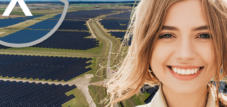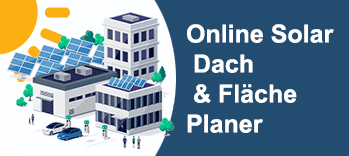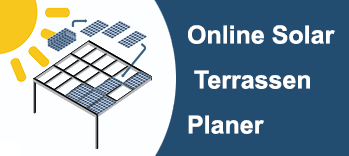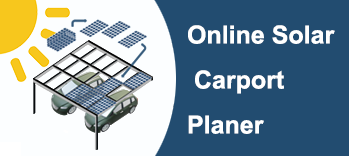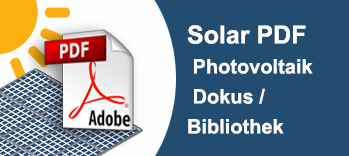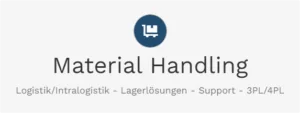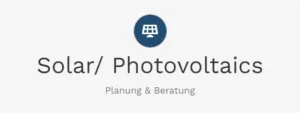Kronos Solar Projects GmbH from Munich is planning a solar park in Holste (municipality of Hambergen, Lower Saxony)
Xpert pre-release
Language selection 📢
Published on: September 16, 2025 / Updated on: September 16, 2025 – Author: Konrad Wolfenstein

Kronos Solar Projects GmbH from Munich is planning a solar park in Holste (municipality of Hambergen, Lower Saxony) – Creative image: Xpert.Digital
Electricity for thousands of households: Why this 66-hectare solar field in the Ore Mountains is now causing controversy
Solar park development in Germany: Between potential and challenges
The development of solar parks in Germany is facing a remarkable transformation. With over 4.2 million installed photovoltaic systems and a total capacity of 98 to 107 gigawatts, solar energy accounts for approximately 18 to 20 percent of the German electricity mix. At the same time, ambitious expansion targets and complex approval procedures are creating new challenges for project developers like Munich-based Kronos Solar Projects GmbH, which is currently driving forward projects like the planned solar park in Holste.
The current market situation in Germany
Germany has developed into one of Europe's most important solar markets in recent years. Annual new capacity expansion reached a new high of 16.7 gigawatts in 2024. This momentum is reflected in the regional distribution, with Bavaria continuing to lead the way with over 26,000 megawatts of installed capacity, followed by Baden-Württemberg and North Rhine-Westphalia.
The energy transition has given the solar industry a tremendous boost. Vattenfall, for example, plans to install around 500 megawatts of solar power and 300 megawatts of large-scale batteries annually, often in the form of agri-photovoltaic systems that combine energy generation and agriculture. This development demonstrates that solar energy has evolved from a niche technology to a key pillar of the German energy system.
Project development and approval procedures
The development of a solar park is a multi-year process that presents significant planning and legal challenges. The process is typically divided into three main phases: planning and development, construction, and operation.
The planning phase begins with land acquisition and the assessment of potential locations' suitability. Factors such as solar radiation, soil quality, proximity to grid connections, and local conditions play a crucial role. A key aspect is the early involvement of all relevant stakeholders, especially municipalities, authorities, and the local population.
The approval process itself is complex and time-consuming. Most ground-mounted photovoltaic systems require a development plan procedure, which takes an average of 12 to 24 months. This development plan forms the basis for the subsequent building permit and must be submitted to the municipal decision-making bodies for approval.
Privileged areas and accelerated procedures
The Act on the Immediate Improvement of the Framework Conditions for Renewable Energies in Urban Development Law, which has been in force since January 2023, brought important relief. Solar parks along highways and railways are now considered privileged projects under the Federal Building Code, which generally no longer requires a development plan.
This privilege allows for significantly faster approval processes and makes projects more cost-effective. However, restrictions apply, such as the 40-meter extension ban along highways, which reduces the usable area from 200 to 160 meters.
Financial participation of the municipalities
A key component for the acceptance of solar parks is the financial participation of the host communities. The Renewable Energy Sources Act 2023 allows plant operators to pay up to 0.2 cents per kilowatt hour of solar power fed into the grid to the affected communities. This regulation applies to both subsidized EEG projects and subsidy-free projects with power purchase agreements.
The financial benefits for municipalities are not limited to these direct payments. Additional revenues arise from leasing municipal land, engaging local companies for maintenance and upkeep, and the positive image effects of innovative energy projects.
New: Patent from the USA – Install solar parks up to 30% cheaper and 40% faster and easier – with explanatory videos!

New: Patent from the USA – Install solar parks up to 30% cheaper and 40% faster and easier – with explanatory videos! - Image: Xpert.Digital
At the heart of this technological advancement is the deliberate departure from conventional clamp fastening, which has been the standard for decades. The new, more time- and cost-effective mounting system addresses this with a fundamentally different, more intelligent concept. Instead of clamping the modules at specific points, they are inserted into a continuous, specially shaped support rail and held securely. This design ensures that all forces occurring—be they static loads from snow or dynamic loads from wind—are evenly distributed across the entire length of the module frame.
More about it here:
Bottlenecks, declining market values and new technologies: setting the course for solar projects
Grid connection as a critical success factor
Grid connection is increasingly becoming a bottleneck in solar park development. Although the Renewable Energy Sources Act (EEG) generally guarantees priority connection for renewable energies, the rapid expansion is leading to capacity bottlenecks in the power grid.
The grid connection must be clarified with the responsible grid operator in the early planning phase.
Key issues include the availability of nearby feed-in points, existing grid capacity, and the associated costs of connection. High investment requirements for long grid connections can significantly impact project profitability.
Innovative solutions such as the shared use of grid connections from different energy sources are gaining importance. One example is the combination of solar and wind farms, where the complementary generation profiles enable more efficient utilization of the grid infrastructure.
Agri-photovoltaics as a future-oriented technology
Agri-photovoltaics represents an innovative solution to the land competition between energy production and agriculture. This technology uses agricultural land for both food production and electricity generation.
The Renewable Energy Sources Act (EEG) 2023 established explicit regulations for agri-photovoltaic systems for the first time. Systems up to 2.5 hectares in size are privileged under building law and do not require a development plan, provided they are spatially and functionally connected to an agricultural operation. Electricity generation may use a maximum of 15 percent of the agricultural land.
Market development and price trends
Market trends are showing mixed signals. While installed capacity is growing continuously, electricity prices on the exchange have fallen significantly. The annual market value for solar power fell from a record high of 20.8 cents per kilowatt-hour in 2022 to just 5.9 cents in 2024. This trend makes self-consumption more attractive than feeding into the grid.
The price decline will continue in 2025. In May 2025, the market value reached a historic low of just 2.0 cents per kilowatt hour. This development is primarily due to the rapid growth in installed solar capacity and the associated oversupply on sunny days.
Technological developments and innovation
Photovoltaic technology is continually evolving. Modern bifacial modules, which can also utilize indirect light on their backs, increase energy yield. Advances in storage technologies are improving grid integration and increasing the predictability of solar power generation.
Innovative concepts such as floating photovoltaics on water surfaces or integration into transport infrastructure are opening up new potential for land use. This diversification is important because suitable land is becoming increasingly scarce.
Challenges and future prospects
The German solar industry faces significant challenges. The bureaucratic burden of permitting procedures, grid connection bottlenecks, and competition for land require innovative solutions. At the same time, many companies are suffering from high levels of default and bankruptcies.
However, the political framework remains fundamentally favorable. The Renewable Energy Sources Act 2023 envisages an expansion to 215 gigawatts by 2030 and 400 gigawatts by 2040. Achieving these ambitious goals, however, requires both technological innovations and improvements in the approval procedures.
The importance of solar energy for Germany's energy transition is undisputed. On sunny days, photovoltaics already covers over 90 percent of electricity demand. However, with the further electrification of transport and industry, electricity demand will increase significantly, necessitating additional expansion.
Outlook for projects like Holste
Projects like the planned solar park in Holste are exemplary of current developments in the German solar industry. Julien Stoffers of Kronos Solar Projects GmbH's estimate that the process will take another two to three years reflects the reality of German approval practices.
Several factors are crucial for the successful implementation of such projects: early and transparent communication with all stakeholders, consideration of local concerns, professional project management, and, last but not least, favorable market conditions for grid connection. The combination of proven development strategies and innovative technologies will determine whether Germany can achieve its ambitious expansion goals in the field of solar energy.
Look, this little detail saves up to 40% installation time and costs up to 30% less. It's from the USA and patented.

NEW: ready -to -mount solar systems! This patented innovation accelerates your solar construction massively
The heart of ModuRack 's innovation is its departure from conventional clamp fastening. Instead of clamps, the modules are inserted and held in place by a continuous support rail.
More about it here:
Your partner for business development in the field of photovoltaics and construction
From industrial roof PV to solar parks to larger solar parking spaces
☑️ Our business language is English or German
☑️ NEW: Correspondence in your national language!
I would be happy to serve you and my team as a personal advisor.
You can contact me by filling out the contact form or simply call me on +49 89 89 674 804 (Munich) . My email address is: wolfenstein ∂ xpert.digital
I'm looking forward to our joint project.












